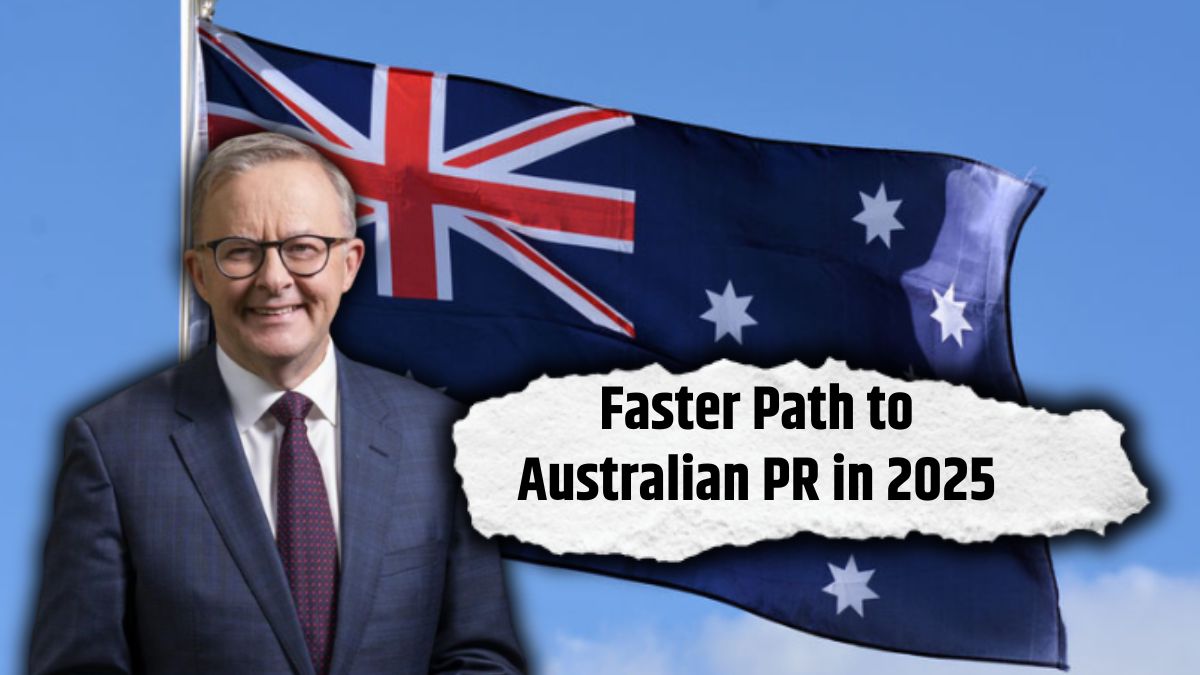Australia continues to attract skilled professionals, international students, and investors seeking permanent residency. In June 2025, major changes have been introduced to simplify the PR process, revise salary thresholds, and align visa policies with Australia’s economic priorities. Whether you’re aiming to migrate for work, study, or investment, this comprehensive guide covers all latest pathways, eligibility criteria, and application steps to help you navigate the updated PR system.
Key Policy Changes to Australian PR Process in 2025
Several structural and financial updates have reshaped the migration landscape in 2025. Here’s what every applicant needs to know:
Visa Fees Set to Rise from July 2025
Starting July 2025, all visa application fees will see a significant increase. Some of the notable adjustments include:
- Student Visa Fee: Increasing from \$1,600 to \$2,000
- Skilled and Employer-Sponsored Visas: Similar price hikes expected
Applicants should budget accordingly to avoid unexpected financial strain during the application process.
Increased Salary Thresholds for Employer-Sponsored Visas
Minimum income requirements for employer-sponsored visas have been updated to reflect Australia’s labor market conditions:
- Core Skills Income Threshold (CSIT): \$76,515 (up from \$73,150)
- Temporary Skilled Migration Income Threshold (TSMIT): \$76,515
- Specialist Skills Income Threshold (SSIT): \$141,210 (up from \$135,000)
These new thresholds will impact Subclasses 186 and 482, making it essential for both employers and applicants to meet the updated criteria.
Visa Subclass Consolidation for Clarity and Efficiency
The Australian government is streamlining its skilled and temporary work visa subclasses to remove overlaps and simplify navigation for applicants. This aims to create a more transparent and efficient visa framework.
Points System Gets a Strategic Overhaul
The General Skilled Migration (GSM) points system has been adjusted to favor:
- Australian work experience
- Higher academic qualifications
- Skills in high-demand sectors
As a result, candidates with local experience and qualifications will have a stronger chance of receiving invitations to apply for PR.
Regional Australia Offers Faster PR and More Support
Migrants choosing to live and work in regional Australia will benefit from:
- Faster PR processing times
- Bonus points in the GSM system
- Eased skills recognition
- Extra support for regional employers, especially in agriculture, aged care, and health services
The push to attract skilled workers to non-metropolitan areas remains a key government priority in 2025.
Family and Graduate Visa Reforms
Partner Visas
Now simplified into a single-stage process, removing the previous two-step approval model.
Parent Visas
Updated to include more flexible temporary pathways that can later lead to permanent residency.
Graduate Visas
Currently under review. Some occupations will benefit from faster PR routes through the Skills in Demand Visa, targeting graduates in fields where Australia faces critical shortages.
Major PR Visa Pathways Available in 2025
Let’s break down the most relevant visa types, eligibility, and key features for those planning to apply for PR this year.
General Skilled Migration (GSM) Visas
| Visa Subclass | Type | Points Required | Key Features |
|---|---|---|---|
| Subclass 189 | Skilled Independent | 65+ | No sponsorship needed |
| Subclass 190 | Skilled Nominated | 65+ | Requires state/territory nomination |
| Subclass 491 | Skilled Work Regional (Provisional) | 65+ | Regional focus; leads to Subclass 191 PR |
Employer-Sponsored Visas
| Visa Subclass | Type | Salary Threshold | PR Pathway |
|---|---|---|---|
| Subclass 186 | Employer Nomination Scheme (ENS) | \$76,515+ | Direct PR |
| Subclass 482 | Temporary Skill Shortage (TSS) | \$76,515+ | Leads to PR via Subclass 186 |
Business and Investment Visas
| Visa Subclass | Type | Investment Required | PR Pathway |
|---|---|---|---|
| Subclass 188 | Business Innovation & Investment | Varies | PR via Subclass 888 |
| Subclass 132 | Business Talent (Permanent) | High investment | Direct PR |
2025 Step-by-Step PR Application Process
Follow these steps to ensure your PR application is complete and successful:
Step 1: Check Your Points
Use the official PR Points Calculator to confirm you meet the 65-point minimum.
Step 2: Choose the Right Visa Pathway
Pick from GSM, employer-sponsored, or business/investment categories based on your skills and goals.
Step 3: Get a Skills Assessment
Submit your qualifications and experience to an authorized assessment body like VETASSESS, ACS, or Engineers Australia.
Step 4: Provide English Language Results
Most applicants must submit IELTS, TOEFL, or PTE Academic scores.
Step 5: Submit Expression of Interest (EOI)
Create an EOI on SkillSelect and enter your profile for government consideration.
Step 6: Receive Invitation to Apply (ITA)
Once selected, you’ll receive an ITA—priority is given to those with higher points or in-demand occupations.
Step 7: Submit Your Application
You’ll have 60 days to complete and lodge your PR application after receiving your ITA.
Step 8: Health and Character Checks
Undergo medical examinations and provide police clearance certificates.
Step 9: Get Your PR Visa Grant
After processing, your PR visa will be issued, allowing you to live, work, and study permanently in Australia.
Visa Fees, Processing Times, and PR Pathways (2025)
| Visa Type | Criteria | Fee (from July 2025) | Processing Time | PR Pathway |
|---|---|---|---|---|
| Subclass 189 | 65+ points | ~\$4,640+ | 3–6 months | Direct PR |
| Subclass 190 | 65+ points + state nomination | ~\$4,640+ | 4–8 months | Direct PR |
| Subclass 491 | 65+ points + regional nomination | ~\$4,640+ | 6–12 months | PR via Subclass 191 |
| Subclass 186 | Employer sponsorship + salary | ~\$4,640+ | 6–12 months | Direct PR |
| Subclass 482 | Employer sponsorship | ~\$2,770+ | 2–6 months | PR via Subclass 186 |
| Subclass 188 | Investment/business | Varies | 12–24 months | PR via Subclass 888 |
| Subclass 132 | High-value business | Varies | 12–24 months | Direct PR |
Fees are approximate. Actual costs and timelines may vary based on case complexity and demand.
Community Advice and Practical Tips for 2025 Applicants
- Many applicants are boosting their points through professional year programs, extra certifications, and local work experience.
- State nomination programs (Subclass 190 and 491) may temporarily close and reopen depending on allocation quotas—timing is critical.
- Subclass 189 remains the fastest PR route, but strong competition means higher points are often needed.
- Regional migration remains a powerful and underutilized option, offering extra support and quicker processing for those willing to relocate outside major cities.









